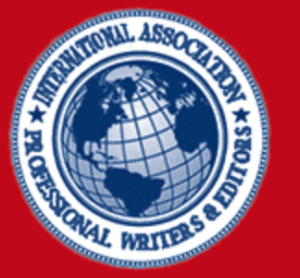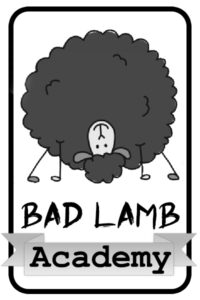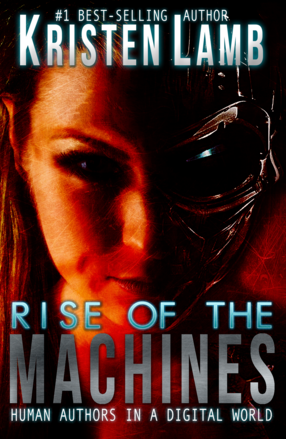Writing a novel? Welcome to hell. It will tear your soul apart.
Just kidding (not really).
After almost a decade in the business, I must attest that fiction is the toughest form of writing. It’s like trying to create and conduct a symphony with only black letters on a white page. So many things have to be balanced perfectly so as not to provide a natural spot for a big fat bookmark. The author must first have a hook that makes the reader want more, and then create a protagonist who possesses a story-worthy problem that makes us desire to spend the next 80-100,000 words giving a crap…without tipping over in the TDTL category (Too Dumb to Live). On top of that, there is pace, tone, POV, characterization, etc. It can be a dizzying experience that can frustrate even the most highly motivated.
Back last summer, I had the privilege of attending the first Warrior Writer Workshop by NY Times Best-Selling Author Bob Mayer (Bob just released a Warrior Writer book, by the way–more on that later). Anyway, several of my writers from my Fort Worth critique group also attended this landmark event. We realized after day one with Bob that we needed to make a serious change to the way we were approaching critique. Truthfully, we’d known it for a couple of years, just didn’t really have a solid idea how to change things. Bob’s Warrior Writer gave us the answer.
For my one year as VP and four years as Prez of this particular group, it had been a never-ending battle trying to get rid of this sick dependence on line-edit. Too many members believed that showing up twice a week to look for every “was” cluster or dangling participle was actually productive. In my opinion, there were too many members mistaking mere “activity” with meaningful “progress.” And the tragic part is the writing never improved. Week after week, the characters still remained flat, the POV switched so much that reading required Dramamine, and the plots had more holes than cheesecloth. And there were also some great writers, but this format of 5-10 page critique in a microcosm was merely a formula for frustration when one was working on a piece that spanned 100, 000 words.
What bothered me most was that I saw a lot of highly motivated writers in the group who wanted more, and who possessed the talent to write great material…if they could just see HOW. I’ve also fought the battle (in another group) with some extremely talented (published) writers who firmly believe that if members just attend and pay attention at critique, that, by osmosis, they will learn what they need to learn to write a darn good book.
Um, no.
That’s like saying if I hang out long enough at the Dallas Symphony practice, I will eventually be able to pick up the cello and play by ear. Now are there people who learn that way? Yes! And boy are we ever jealous of those guys. But, the reality is that, as a leader, if I cared about those in membership, I had to appreciate that not everyone learned the same way. Thus, we broke off and created Warrior Writer Boot Camp. This was a group designed specifically for those who desired to write a novel.
Making hell a little more manageable, :).
Before any writing (or rewriting) takes place, Warrior Writer Boot Camp runs attendees through a series of steps designed to provide a much stronger framework for a story, and hopefully a much greater likelihood of publication.
Today, we’ll discuss two Warrior Writer Boot Camp steps for success.
1) In WWBC, we have the author place the one-line conflict in the header.
A woman must choose between her love for her husband and her love for her country when she finds a box of mysterious letters indicating the man she loves is a Jamaican spy.
This one line is to make sure that all that follows after this point in critique falls in line with that conflict. All other group members at all times know what the story is about. We are reminded of the big picture. This makes it easier for us to catch an author who’s gone off on a tangent. Or, sometimes the tangent is better (subconscious working) and then the group can help the author modify the one-line conflict accordingly. This simple tactic prevents “critique in a microcosm”—the five or ten pages might be great, but if they have nothing to do with the main conflict, then the scene needs to be cut or rewritten and made salient.
This one line is the very first step. And, to be blunt, at this point in Boot Camp, it doesn’t matter if it sucks. This next step will likely change that one line anyway.
2) Plot every detail, no matter how small.
As a writer, your subconscious mind is one of the greatest assets you possess. By plotting “every” detail ahead of time, you provide all sorts of fodder for your subconscious to get creative. In Warrior Writer Boot Camp we require members to detail everything (using the Character template in Bob Mayer’s Novel Writers Toolkit). The more detail the better. And give your details underlying reasons.
Write down that your protagonist loves Frosted Flakes because it reminds her of happier times when she was a kid before her father died. This way, later, when you get to writing and you have a stressful scene for your protagonist, what is going to be a natural choice for comfort food? Frosted Flakes. This will prevent a lot of your characters doing the same things. When we have to think of things on the spot, often we insert our own likes/proclivities. I recently edited a writer who had every single character drinking coffee when they were stressed or thinking. Guess what this author drinks when he is stressed or thinking?
If I know ahead of time that my protagonist is a Christian (religious beliefs are part of the template), then it is logical she pray when faced with an EOE (emotionally overwhelming event). If she is a Christian with wavering faith, the prayer will be different than a person of more solid beliefs. You get the idea.
Getting an idea of looks, manner, habits, beliefs are all vital to creating rich characters and a great story. It’s like going from a palette of paint with three primary colors to suddenly having one of those super-duper paint sets with hundreds of colors.
If you ever attend one of Bob’s Warrior Writer Workshops (and I certainly hope you do), you will probably hear him talk about the characters in Lonesome Dove. McMurtry did such a great job of creating characters that there was no question what each would do when the inciting incident occurred. Think about this in your own life. How would your mother react to being mugged? Now your father? Your best friend? The guy at the gym who teaches Cardio Kickboxing? Each of these people would have an entirely different book with the same inciting incident. Why? Because everyone is comprised of a different set of experiences, skill-sets, attitudes, beliefs, and abilities. All of these elements are going to directly affect HOW they react, or even if they react at all. This is what you the author are doing before you ever start the novel.
In WWBC, we create the antagonist first. Why? Because without the antagonist, the protagonist doodles on and has a happy conflict-free life. We don’t really give a rip about Luke Skywalker unless Darth enters the picture. Our WWBC goal is to make certain the writer is creating a worthy adversary, one whose defeat will elicit cries of joy from a riveted reader. It also makes it much simpler to create a protagonist perfect for taking him/her/it out (Week Two). These short dossiers make it much easier to adjust characters, goals, agendas, plans ahead of time before the author gets 50,000 words in and realizes there is a huge problem.
Pantsers need not cry out in pain. This method will not impede your creativity. I can attest to that, being a long-time pantser myself. It’s just that we get an opportunity to get to know and adjust our characters/plot/setting ahead of time. This will help keep us on track once we begin writing our novel. We can still be pansters, but it will be far easier to see the difference between getting creative and just jumping off the train altogether and landing in a tar baby. This tactic also creates characters that are richer sooner. As a pantser, I always found that my characters were kind of flat until about 40 pages in. Well, it took 40 pages for me to figure out who the heck the characters were! By doing all their back-story first, I now find my characters coming to life on page ONE.
To all you plotters, this method is good for helping you focus on characterization, which is often a weakness for the plot-driven author. It will give depth and texture and provide information to your subconscious to help make your plots even better.
Never underestimate the power of collective minds. In WWBC we now can have qualitative critique that focuses on CONTENT. When a new attendee brings his antagonist (with the one-line conflict in the header) the group now gets an opportunity to say, “Whoooo. Can’t WAIT for the book!” or “Seriously? Are you high?” (we’re not that mean). We get a chance to help the author make the strongest antagonist possible before the writing ever begins. We can say, “That goal seems silly,” “His goal needs to be bigger,” “What she wants is way too complicated, and I’m lost,” “Your bad guy isn’t scary, he’s annoying,”“That isn’t logical,” “What does this goal have to do with your one-line conflict?” Of course, we also can say, “I like that, but it might be stronger if you did X,” or “Great plan. Now make sure your protag’s greatest fear is X, because then you’ll have your arc.”
One doesn’t have to be a published author or a professional editor to do this sort of critique. We are ALL readers, and we know what we like, what will make us stay awake until four in the morning reading. We also know what will make us toss a book with great force across the room. The WWBC method allows problems to be addressed and fixed ahead of time, and I can attest that critique time is now put to far better use than merely looking for repetitive words and misplaced commas. Critique is also much more productive because instead of an author hearing, “Well, your protagonist is unlikable,” the writer now can get feedback from the group as to WHY the protagonist is unlikeable and can be given suggestions as to what would fix that problem. As authors, we often get tunnel vision, and can’t see the forest for the trees. WWBC alleviates this problem by providing different perspectives at all critical stages along the genesis of any work.
Critique now becomes a crucible where all the “impurities” can be fired out.
Over the coming weeks, we will delve deeper into this method of critique/constructing a book. Although having a group setting is ideal, a lot of these tactics can be used by an individual. In WWBC, we are actually a group designed to work for all kinds of learners (visual, auditory, kinesthetic, combination). Mostly, this format provides accountability, practice and repetition. Writing fiction can be hell, but no one said we had to do it alone.
Until next time…
For a Warrior Writer Workshop near you, contact Bob Mayer at www.bobmayer.org. Now ON-LINE! And Bob just released “Warrior Writer–From Writer to Published Author” so go buy a copy TODAY! http://whodareswinspublishing.com/









8 comments
Skip to comment form
Loved blog title! And you’re so right about line critiques. Wish my group was ready to make the global change you’re talking about (sigh). I wrote about the love-hate thing in this SHORT blog post: http://myfictionwritingtips.com/2010/01/22/writing-whats-love-got-to-do-with-it/
Thanks for all you do!
Author
Thanks, Lynne for the compliments and for taking time to comment. It is much appreciated. I am so happy that my blog is helpful to you. Good luck and keep us posted on your success…so we can claim credit, :D…just kidding, 😛
Yes, critique groups must move past simple line by line critiques or style critiques. The story has to be looked at. And there needs to be a way to do it. Currently working on putting together a Warrior Writer Critique Group guide that allows a group to progress in a linear fashion toward a workable, complete and solid manuscript.
Great article. Just talked about crits at writers’ group Saturday.
Just wanted to let you know what a great post this is. I have written two novels together with a partner and we do a lot of the things that you articulate so well in this article, including making detailed character sketches and thinking through all the backstory beforehand so the characters are real right off the bat. It really helps. But I never thought of creating the antagonist first. That’s a great idea, and I’ll suggest it to her as we get ready to pull together our research and figure out the story for our next book!
Author
Thanks for the feedback! I am so happy I could help. Good luck!
Changing from line edit to outlining was essential for me. I could never understand how anyone could listen and comment on a piece of work without knowing where the work was ultimately heading (whoa, was that a flying trash can?). Being able to dig into characters and plot, deciding what is a story worthy problem with genuine conflict and drama, is much more interesting. Even knowing what to discuss in a character’s character is informative. There is so much value to education and practical application (in our group) in these areas. But as usual it takes an effort and, and this is what puts most people off education in the first place, the learning curve is long. Contrast that with the curve for “was clusters” and its easy to see why line edit is the norm.
There again, maybe its just because grammar has never been my strong point…
Very very useful. I was having problem keeping focus in my story and my antagonist is not menacing at all. I’m bookmarking this. Thank you very much!